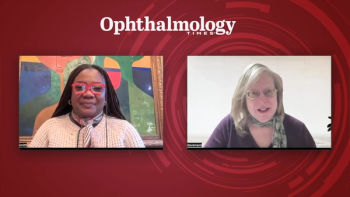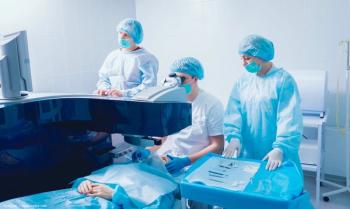
Q&A: Sruthi Arepalli, MD, discusses outcomes in patients with noninfectious uveitis requiring secondary lens implantation
Key Takeaways
- Secondary lens implants in uveitis patients were generally well-tolerated, with AcrySof lenses showing the best outcomes and no need for explantation.
- Anterior chamber lenses were linked to increased anterior inflammation, leading some patients to opt for lens removal.
Sruthi Arepalli, MD, assistant professor at Emory University School of Medicine in Atlanta, Georgia, presented at the 2025 American Society of Retina Specialists meeting. This meeting was held in Long Beach, California, from July 30 through August 2, 2025. Her presentation was titled, "Long-term visual and surgical outcomes in 33 eyes with noninfectious uveitis requiring secondary lens implantation."
Following her presentation, Ophthalmology Times caught up with Arepalli to discuss this research and gain insights into how this data may inform future approaches to patient care.
Note: This conversation has been lightly edited for clarity.
Ophthalmology Times: Can you summarize this research and how it may impact the patients with uveitis?
Sruthi Arepalli, MD: This year, I had the honor of presenting the outcomes of secondary lens implants in patients with uveitis. So essentially, in ophthalmology, we know that these secondary lens implants do really well overall, but there is not a lot of literature that looks at uveitis patients specifically. So what we did was did a retrospective review of all of our charts at Emory Eye Center on patients who had non-infectious uveitis, were over the age of 18, and got an anterior chamber lens, a Yamane lens or an AcrySof lens. And then we compared those outcomes, what we found that is, in general, all these lenses are well-tolerated. We found that with the anterior chamber lenses, patients tend to develop a little bit of anterior inflammation. This is compounded by the fact that most patients in the study had anterior inflammation to begin with, and they were the patients with the longest follow-up since that lens has been around for the longest, but because of that concern, a few of those patients elected to remove their lens. During the study, we found with the Yamane lenses, patients do well, that there were 2 instances where the lens tilted a little bit, and that required revision or explantation. And our AcrySof lens did fairly well and didn't require any explantation or removal.
OT: How should ophthalmologists apply these finding as they guide their uveitis patients through the options?
Arepalli: I think when you're choosing lenses for patients, it comes down to what their goals are, what their anatomy looks like, and what works best in your hands. I think for uveitic patients, they're such a special population because we want to avoid, like all of our patients, more surgery than necessary, but particularly in a uveitic surgery, tends to make their eyes angrier. So in this data set, it seemed that the AcrySof lens kind of edged out the other 2 a little bit more and gave us our best results. And so that's probably the lens that we would recommend moving forward. Yeah, so there's another type of secondary lens that we didn't talk about in enVista, and that's just because no one at Emory places those right now. We tend to gravitate towards AcrySof. But it would be really interesting to compare all 4, and then I think expanding the study to other sites to include more patients, to make sure that these trends hold up.
Newsletter
Don’t miss out—get Ophthalmology Times updates on the latest clinical advancements and expert interviews, straight to your inbox.













































